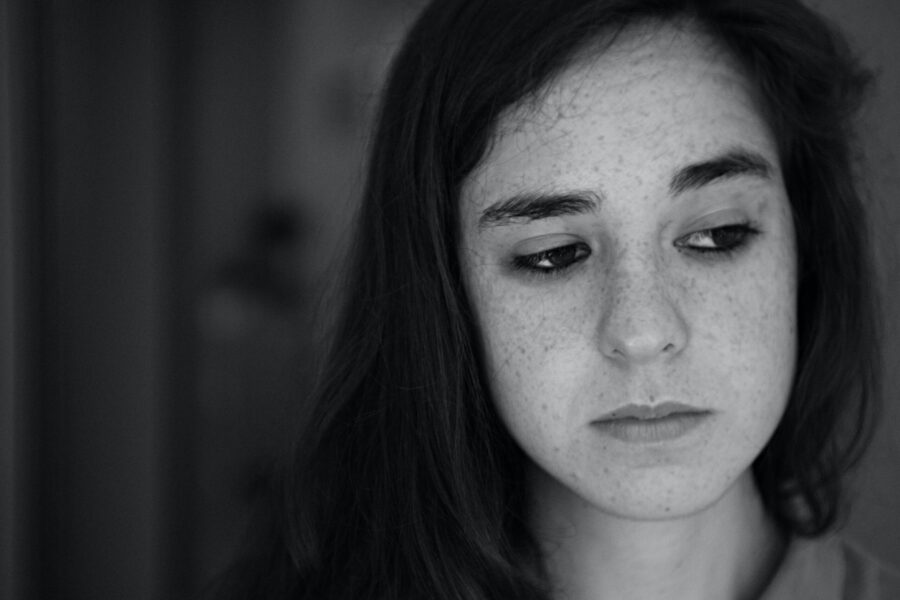Anxiety & Depression: Two Sides of the Same Coin
Why do anxiety and depression seem to go hand in hand?
In an article for verywellmind.com, Dr. Deborah Glasofer, Associate Professor of Clinical Medical Psychology at Columbia University, lays out the similarities, differences, and their shared biological basis.
Anxiety is a normal emotion “in response to high-stakes or potentially dangerous situations. Likewise, depression is a normal response to “disappointing, upsetting circumstances.” However, when symptoms persist and interfere with normal functioning, becoming a mood disorder, biology is at play. The brain relies upon neurotransmitters, chemical messengers that send signals between neurons, or brain cells. It is believed that low levels of neurotransmitters – specifically serotonin, dopamine, and epinephrine – play a role in both anxiety and depression.
While anxiety and depression can be described as two sides of the same coin, they manifest differently.
Anxiety
People experiencing anxiety may:
- Worry about the future, either immediate or long-term
- Experience uncontrollable, racing thoughts, imagining something going wrong
- Avoid situations that trigger anxiety
- Worry about death in response to the perceived danger of physical symptoms or anticipated dangerous situations
They may experience the following physiological symptoms:
- Difficulty concentrating
- Difficulty falling or staying asleep
- Dizziness
- Gastrointestinal distress (e.g., nausea, diarrhea, or constipation)
- Increased heart rate, blood pressure, sweating
- Muscle tension
- Shortness of breath
Social anxiety disorder (SAD) makes one apprehensive about meeting new people or fearful of being rejected or evaluated negatively by others, while generalized anxiety disorder (GAD) is not centered around any particular topic or situation.
Glasofer sums it up this way: “simply put, people with anxiety are mentally preoccupied with worry to a degree that is disproportionate with actual risk or reality.”
Depression
In contrast, people experiencing depression may:
- Feel hopeless about themselves, others, or the world, unable to imagine a positive outcome
- Believe it is useless to try to think or feel differently
- Feel worthless
- Think about death, believing that life is not worth living or that they are a burden to others. In moderate to severe depression, these ruminations can spiral into suicidal thoughts.
Physically, people with depression may experience:
- Difficulty with concentration, focus, and memory due to circular thinking
- Lack of energy
- Loss of appetite or a significant increase in appetite
- Moving or talking more slowly than usual
- Physical achiness without cause
- Sleeping much more or much less than is typical
Major depressive disorder (MDD) occurs when these types of thoughts or symptoms “are persistent most of the day and more days than not for weeks on end.”
Normal Ups and Downs or a Mood Disorder?
When life becomes stressful or difficult (e.g. loss of a loved one, end of a relationship, diagnosis of an illness, financial pressures), it is not unusual to experience brief periods of low mood or anxiety.
If symptoms persist (often for multiple weeks or months) and impair daily life functioning, you may be diagnosed with a mood disorder. The difference between anxiety and an anxiety disorder – and depression and major depressive disorder (or major depression) – is a matter of degree and the severity and persistence of symptoms. According to Dr. Glasofer, “mood disorders are diagnosed when the associated symptoms occur more often than not for at least a couple of weeks.”
If you wonder if anxiety or feeling down are becoming a clinical issue, ask yourself: how much are the thoughts or symptoms getting in the way of your ability to function in daily life? How long have they been occurring? It might help to keep a journal for a few weeks to accurately track how you are feeling.
The Good News? Treatment Is Available
The good news is that anxiety and depression are treatable conditions.
Various forms of psychotherapy are available. Structured psychotherapy, such as cognitive behavioral therapy (CBT), is useful for teaching you how to “work with unhelpful thought traps.” It generally asks you to moderate your behavior: “For anxiety, the goal is to minimize avoidant behavior and to help you disconfirm a feared consequence. For depression, the goal is to help you experience positive emotion, a surge in energy (even if briefly), or another type of pleasant interaction with the world.”
In psychodynamic talk therapy, you are asked to share freely about the past and your current situation in order to help you become aware of unconscious thoughts and emotions driving your current symptoms.
Medication can also be helpful in combatting both anxiety and depression. SSRIs, a group of medications known as selective serotonin reuptake inhibitors, and SNRIs, selective norepinephrine reuptake inhibitors, stop the brain from reabsorbing needed neurotransmitters, making more available for proper brain function. They have shown to be helpful in treating both anxiety and depression, as have tricyclic antidepressants (TCAs) and anti-anxiety medications.
Treatment can make a world of difference, but Glasofer notes that it does take time: “Bear in mind that while effective treatment for anxiety or depression need not be a long-term commitment, it is likely to require regular, ongoing appointments at least in the short term (say, six to 12 months). Therefore, it is critical to find a professional you trust and with whom you feel comfortable speaking about your symptoms.”
Reach Out – Help Is Available
If you are suffering in silence or isolation, reach out. Help is available. You do not have to feel this way, and your pain will not last forever.
If you are having suicidal thoughts, call the National Suicide Prevention Lifeline at 1-800-273-8255 to reach a trained counselor. After July 16, 2022, you can call 988 to reach that same lifeline. If you are in imminent danger, call 911.
If you are not in immediate crisis, you can start with your primary care physician to get a referral to a psychologist (therapist) or psychiatrist (doctor who can prescribe medication for mental health conditions). Glasofer also offers the following list of national organizations, which can help you research a local provider:
- The Anxiety and Depression Association of America
- The Association for Behavioral and Cognitive Therapies
- The Association for Contextual Behavioral Science
- The American Psychiatric Association
Glasofer, Deborah. “Anxiety vs. Depression Symptoms and Treatment: Overlapping and distinguishing features of anxiety and depression.” Verywell Mind, 07 July 2020, https://www.verywellmind.com/am-i-anxious-4045683.
Photo by Pablo Varela on Unsplash
Note to students: CASSY is here for you. Our mental health professionals are right on school campuses to bring down barriers to receiving care. If you are struggling, walk right in. Our door is open. No matter what you are facing, you are not alone. We will help you find the resources you need. And our services are always free of charge.



